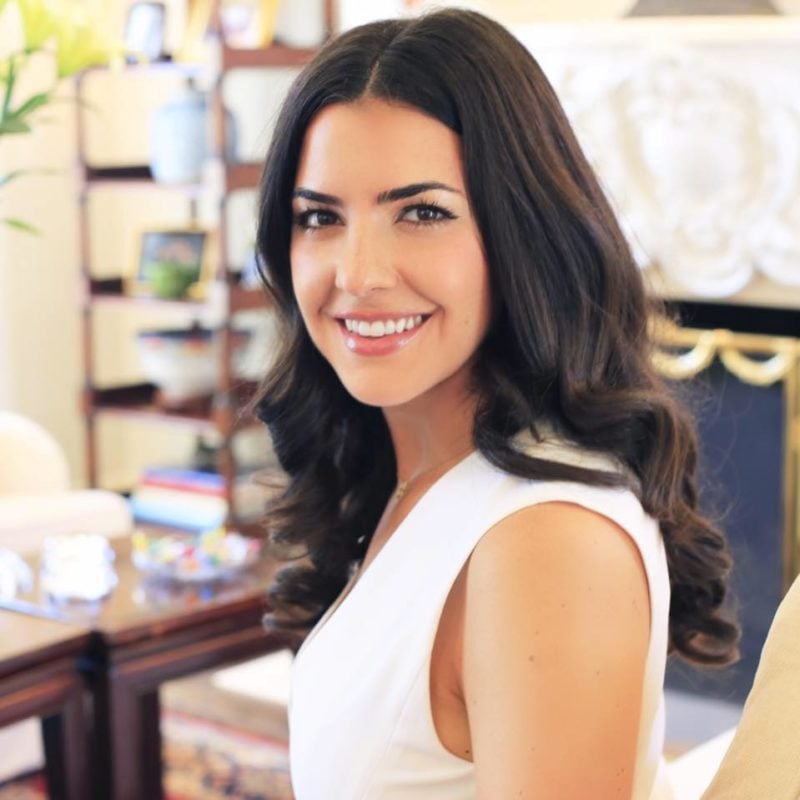This article is edited from a longer interview Dr. Maloof did with Levels co-founder and chief medical officer, Dr. Casey Means, on Instagram. See the full conversation here.
Seven years ago was the beginning of what’s called the quantified-self movement, says Levels advisor Molly Maloof, MD, a physician, technologist, entrepreneur, and lecturer at Stanford University who runs a health optimization practice in the San Francisco Bay Area. This movement is based on self-tracking in order to learn about yourself, your body, and your health.
Dr. Maloof was working with startups as a chief medical officer in a consultant role. After reading countless research papers she determined that there were two measures that were the most critical to track: stress markers, such as cortisol, and blood sugar.
It was during a consulting project where she was tasked to teach a company about why blood sugar mattered that Dr. Maloof first put on a continuous glucose monitor (CGM). “I needed to find out from first-hand experience,” she says. The result was unexpected: “I had thought I was so healthy,” she says. Her readings indicated some insulin resistance. Blood sugar levels were just below prediabetes.
So she changed the way she was living, making tweaks to what she ate and when, and focusing on how lifestyle factors, such as stress, impact her food choices and glucose levels.
“People are often telling me, ‘you look like you’re in your 20’s. What’s going on?’ Honestly, I actually look younger this year than I did three or four years ago, and the reason is that in these last five years, one of the main things I focused on was getting my blood sugar back down into the normal range,” says Dr. Maloof.
“My glucose still spikes sometimes. I’m not perfect. But this isn’t about perfection. This is about bringing your body back to develop better balance and being kind to yourself.” – Dr. Molly Maloof
Beyond the personal changes she’s made, she has a bigger vision in mind.
Earlier in her career—before becoming the multi-hyphenate she is today—Dr. Maloof left her residency program. The system, she found, was broken. “You get so indoctrinated when you’re in medicine to think the way that they want you to think because they want you to be a cog in a machine,” she says. “I just said, this machine sucks and I don’t want to work for this machine. I want to build a new machine.”
And so she struck out on her own to provide the care she wanted to see. “You have to be a little bit of a contrarian to think that the world could be different. If what you see isn’t working, then your job is to figure out ways that maybe things will work,” she says.
That vision for the future? A consumer-driven system focused on high-intensity behavioral change with deep caring and empathy to each individual. I want to see healthcare so good that you want to buy it. I want to see health care that really cares about people and measurably improves your health.
The idea of behavioral change and habit formation—and using biofeedback tools to get in touch with your body—is central to optimizing your healthspan. Here are her seven tips for making a CGM part of your body relearning.
1. Everyone Has Something to Discover
Putting a CGM on all my clients, I realized that every single person learned something. We actually have a CGM monitor inside our heads—we just forgot what it meant. This is a tool that’s teaching us how to really understand what we already know and how to relearn this intuitive sense of what’s going on inside of our bodies.
For me, I was surprised to learn that my blood sugar levels were so high. Maybe it was from chronic stress and maybe it was from the foods I was eating that I thought were good for me. These were gluten-free foods that were still refined carbohydrates and honey and maple syrup. I didn’t realize that these foods I thought were healthy were actually not for my body. I learned that my body is really sensitive to sugar and refined carbs. One of the other habits I had was eating too late at night. I had to work really hard to break that habit because I was insulin resistant.
2. Aim Lower
What I considered the normal blood glucose range used to be whatever wasn’t pre-diabetic. The guidelines say that 140 mg/dL after meals and fasting glucose of 100 mg/dL or less is fine. The research shows that that’s not fine, and there’s a concept of pre-pre-diabetes. I read one of Robb Wolf’s books and he said his goal was less than 110 mg/dL after meals. I thought, shoot, I’m aiming for less than 140 mg/dL and his is less than 110 mg/dL. I started digging through all the research and realized that 110 mg/dL or below is truly optimal after meals. Now some people even say 100 mg/dL or below.
3. Design a Diet for You
It took me many, many years to figure out the right diet that worked for me. You might have to use the CGM for a while before you discover what works for you. For me, it’s more of a low-carb diet. For some of my friends who are vegan, they’re rocking high-carb diets.
Everybody has a different metabolism. Some people really metabolize carbohydrates slowly and it causes a very slow gradual rise, and some metabolize them really fast and get a quick spike. It’s due to a host of factors, such as genetics, activity levels, environment, and even how much amylase you have in your mouth.
My glucose still spikes sometimes. I’m not perfect. But this isn’t about perfection. This is about bringing your body back to develop better balance and being kind to yourself. So, it’s not about being obsessed with your food, it’s about starting to wean out the things that are problematic and bring in the things that are really good for you.
4. Follow Your Hunger
With the CGM you learn that there are habits you need to break and habits you need to make, especially when it comes to mindless eating. It’s a really good tool to help you re-establish your relationship with hunger. Now, I have a habit of unconsciously skipping breakfast. It took me a while to learn how to do this, but now I just wait until I’m hungry to eat. Yesterday it was 10 a.m., and today it was 12 p.m.
If you wait to eat when your blood sugar is 85 mg/dL or less, then you’re more likely to be eating when you’re actually hungry. Glucose monitoring can also teach you not to wait until you’re ravenous on the hunger scale, which causes you to just eat whatever is there.
5. Take an After-Dinner Walk
We all know that walking after meals is good. You’re going to indulge here and there. Go on a walk afterward and exercise. You’re going to see a lower blood sugar number, you’re going to feel better, you’re going to digest your food better, and you’re not going to feel so full going to sleep at night. I can’t tell you the number of times I’ve been wearing a CGM and I had a meal I thought was healthy that started spiking me. I just say okay, time to go on a 40-minute walk. And I go.
6. Use the CGM to Check In with Yourself
I’m not perfect. In the last six months, I’ve been under an enormous amount of stress just like everyone else. I didn’t have a glucose monitor on the whole time, and I definitely found myself dropping back into some emotional eating patterns that I thought I had broken and was free from.
The days where I was at the biggest spikes in these last two weeks were the times when I was the most stressed out. On those days, it’s harder for me to make the best food decisions. The CGM isn’t just a tool for diet monitoring, but it teaches me that it’s a stressful day. It’s a signal to slow down, reframe, change the story you’re telling yourself and get back to a state of better balance. People think it’s just for food, but it’s actually a lifestyle monitor.
What I love about the CGM is that you can always put it back on and return to this knowledge that you’ve gained. I know I can’t eat chips without having a blood sugar spike. Of course, if I go to a Mexican restaurant, occasionally I’ll eat some chips. But the truth is that when you see the data and you realize what’s damaging your body, you don’t want to do that to yourself. Putting the CGM back on is an accountability tool.
7. Think About Your Mitochondria
Mitochondria are the reason why you’re alive right now. Mitochondria are responsible for cellular respiration. This is the process that occurs when you eat food and you turn it into substrates, which are these breakdown products from carbs, fats, and proteins that get into your cells and are able to convert it into energy through what’s called the electron transport chain. This electricity powers a hydrogen turbine which creates both a battery and a capacitor out of the mitochondria–that means they both make charge, store charge and can deploy charge wherever it needs to go. Not only that, mitochondria also play a role in the production of stress hormones, sex hormones, and they help regulate the immune system.
Organ function is so intimately tied to mitochondrial health that I think we’re going to see an entirely new generation of doctors recognize that we’ve been focused on disease states and not focused on the root causes of why we’re so sick. The microbiome is important because the microbiome is partially responsible for the processing of our food and the assimilation into our gut and ensuring we have a healthy immune system. But arguably, the mitochondria are just as or more important.
Our mitochondria can become dysfunctional under what’s called allostatic load (or our total burden of stress) because our lifestyles and our environment are out of sync with our genetic design. We don’t fast enough, and fasting is how we throw out the mitochondria that no longer carry a charge and misformed proteins that accumulate like garbage in the cells. It sounds complicated but it’s pretty simple. Eat less often and don’t spike your blood sugar. A blood sugar spike is basically mitochondria that can’t process the food at the rate that’s entering the cell. This is why it’s so important not to overeat. Finally, move your body to use the food you eat as fuel, and because movement sends the signal to the cell to make more batteries and store more charge!








